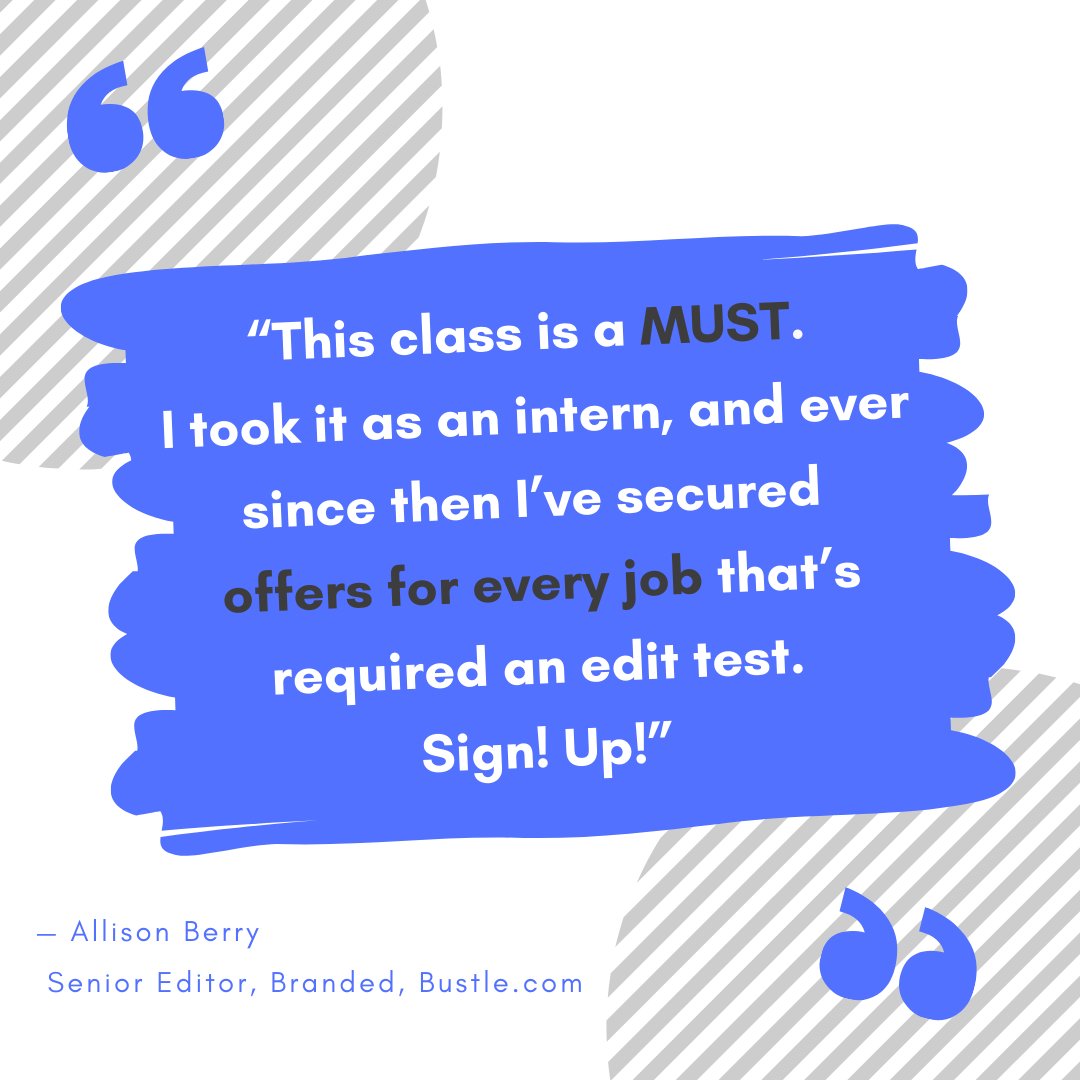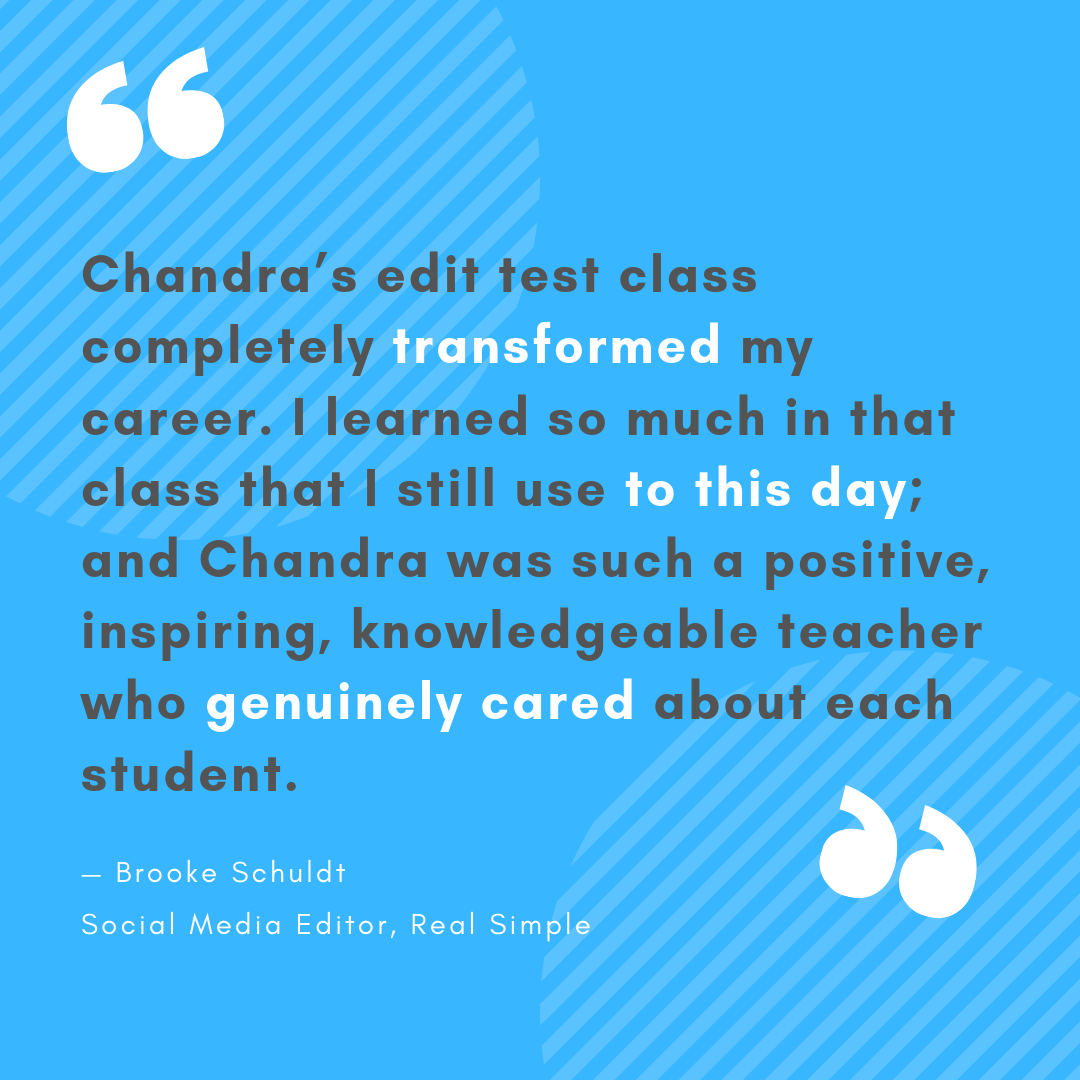Do Your Research.
The goal is to make your editor wonder, Why didn’t I think of that? says Stephanie Wu, now Articles Director of Conde Nast Traveler. When she completed an edit test as an associate editor, she was told that several of her ideas were already in the works at the magazine. Make sure your ideas and edits are original and on the right track by subscribing to the brand’s newsletter, reading its About Us, and googling the latest news surrounding the brand. If you’re applying for a print pub, grabbing—or downloading—the past six issues is key. (Hint: Most NYC public libraries still offer the print versions.) Familiarize yourself with the type of content featured, the formula the use, and how it’s presented, then incorporate that into your pitches.
Class tease: We’ll show how you can dive deeper — to better understand the brand’s audience, its keyword searches, and most popular content.
 Pitch Original Content.
Pitch Original Content.
Editors will toss tests with irrelevant, recycled, or duplicated material. “You wouldn’t believe how many edit tests I’ve seen where the first piece is literally something on our homepage,” says Kara McGrath, Executive Editor at Bustle.com. Pinpointing fresh stories requires more than just scanning Google, Instagram, and The New York Times. Research relevant surveys, reports, studies, and trends and find a news hook. Ask yourself, How would this news service, benefit, interest, and engage this outlet’s reader?
• Class tease: We’ll talk about how to spin an old story to make it feel fresh — and how to write winning display copy that will click bait your hiring manager.
Capture the Brand’s Voice.
“I hate when I get edit tests with things that clearly do not relate,” says Dara Adeeyo, Managing Editor at XXL Mag. Your job is to prove that you’re not only a resourceful writer, but that you can embody the brand and deserve to be on staff. Not being in a publication or website’s target demographic is no excuse for an out-of-place pitch.
• Class tease: Getting into the head of the reader is tricky, but not impossible. You’ll learn clever ways to slip in that you “get it.”
Go Above and Beyond.
If you’re asked to provide one hed and dek for a potential story, offer three solid sets instead. Need to compile a top 10 list? Include five extra examples. Then, imagine how the story could be presented through other platforms. How would it be different online or on social? What type of art, video or infographic could enhance the piece? Perhaps prepare a social strategy to accompany the story.
Just don’t go overboard—text should remain simple and succinct. “I tend to believe that brevity is a good thing. Editors are typically busy and won’t want to read an opus when a few sentences would do,” says David Foxley, now Executive Features editor at Architectural Digest.
• Class tease: We’ll discuss how long the ideas portion of your test should be, what elements each idea should have (and not have), and how to earn extra brownie points.
 Mind the Details.
Mind the Details.
Your editor isn’t only paying attention to copy—the entire presentation matters. This means consistent formatting, sending as few attachments as possible and saving your test as a PDF (unless specified otherwise). “I look for details and attention to directions,” says Adeeyo.
Triple check your work and even read it aloud to ensure you don’t have any typos or grammatical errors. Also doesn’t hurt to have an extra set of eyes look at it before handing in. “I’m always my own worst critic, so I make sure to let a few of my friends take a look at my edit test,” says Marianne Mychaskiw, now a senior copywriter at ScentBird.
McGrath agrees. “I like having my friends who aren’t writers look it over, to make sure it could resonate with a variety of people.”
Class tease: We’ll go over actual edit tests from digital and print brands in a variety of subject areas so you know what to expect and how to tackle whatever is thrown at you.
Don’t Jump the Gun. You may be tempted to turn it in a day early if you crank it out with time to spare, but don’t, says Chandra Turner, a former media exec and hiring manager who has evaluated hundreds of edit tests and is currently teaching the class we keep plugging in this article (!). “You risk the perception that you didn’t give it your full attention or polish. Even if it’s perfect, wait to the deadline to turn it in.”
Class tease: We’ll also talk about the etiquette of edit tests and how to finish out the rest of the hiring process with finesse.
Chandra Turner is founder and CEO of Ed2010 and Talent Fairy. She has been teaching her “Ace Your Edit Test” class for more than 10 years and has helped hundreds of editors finally get the offers they deserve (read all testimonials here). This class has expanded over the years to help you master all edit tests — print, digital, and social media. For the first time, Chandra will be teaching the class virtually (so you can take it in your pjs).




